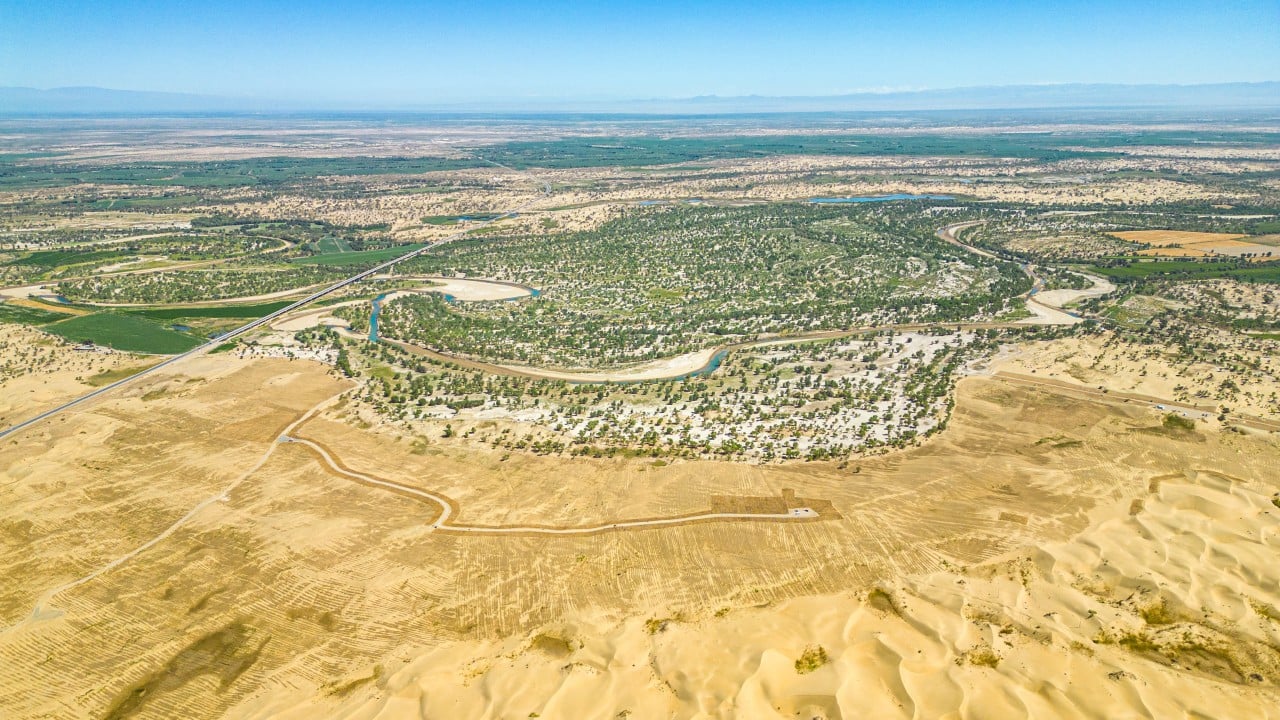Published: 9:00pm, 28 Nov 2024Updated: 11:39pm, 28 Nov 2024
China’s largest desert, and the world’s second-largest sand-shifting desert – is now surrounded by a green belt of various trees and shrubs, as well as a solar-based sand blocking technology.
Advertisement
The encirclement of the Taklamakan Desert in China’s northwestern Xinjiang Uygur autonomous region – an area about the size of Germany – is meant to prevent sandstorms and protect local infrastructure, as well as boost regional economic opportunities.
The green belt – which stretches 3,050km (1,900 miles) – was completed on Thursday after the final batch of several types of vegetation was planted in Yutian county at the desert’s southern edge, according to state media.
Sand-shifting deserts like the Taklamakan are dominated by wind-driven sand dunes and frequent sandstorms, which can affect weather, agriculture and human health.

About 85 per cent of the 337,600 sq km (130,350 square mile) desert is covered by shifting sand dunes, earning the Taklamakan the label “sea of death”.
Advertisement

